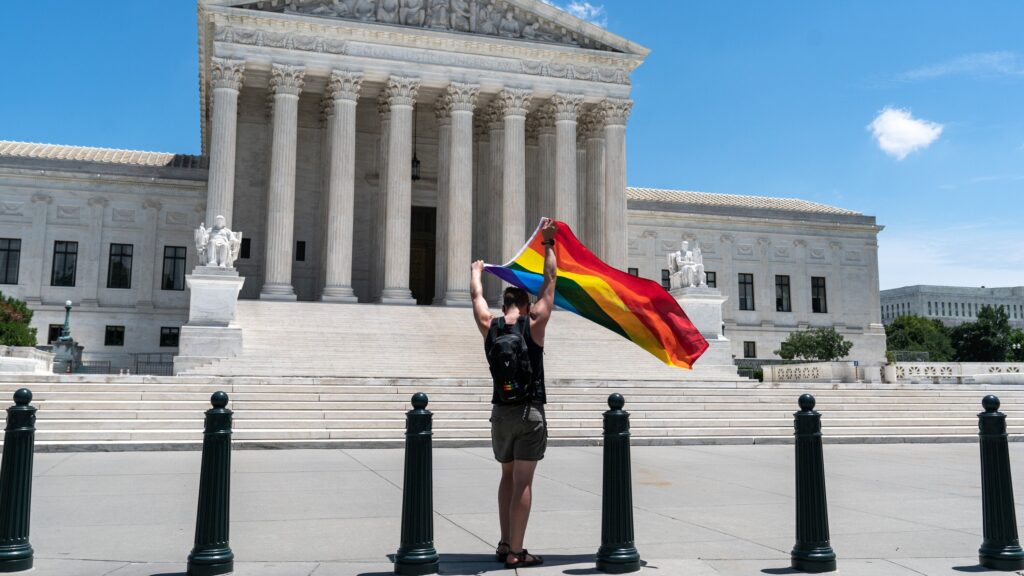
Trump’s Executive Order on Transgender Athletes: The Controversy in Sports
In recent years, the topic of transgender athletes competing in sports has become a hotly debated issue. It’s a conversation that often divides opinions and raises important questions about fairness, inclusion, and identity. One significant event that has added fuel to this fire is an executive order issued by former U.S. President Donald Trump, which restricts transgender women from competing in female sports categories at high school and collegiate levels. This executive order has sparked numerous discussions, both in schools and beyond, about what it means to be fair, inclusive, and respectful of everyone’s rights.
Understanding the Executive Order
In practical terms, Trump’s executive order states that transgender women—those who were assigned male at birth but identify and live as women—will not be allowed to compete in women’s sports programs. This rule was enforced immediately, which means schools had to start adjusting their policies right away. The order gives the Department of Education the authority to investigate whether schools are following Title IX, a federal law that prohibits sex discrimination in education programs and activities.
Now, Title IX was designed to ensure that everyone—regardless of their sex—has the same opportunities in education and sports. Supporters of the executive order argue that it preserves fairness in women’s sports by ensuring that those competing in female categories are biologically female. They believe that transgender women might have physical advantages over cisgender women (those who identify with the sex they were assigned at birth), and thus, allowing them to compete in women’s categories could be considered unfair.
But that’s not the whole story. Many LGBT advocacy groups and transgender rights activists have condemned this executive order as discriminatory. They argue that it not only excludes transgender women from participating in sports but also fuels a culture of fear and discrimination against transgender individuals. These advocates believe that sports are a vital part of community, health, and personal identity and that everyone, regardless of their gender identity, should have the right to participate.
The Ramifications of the Order
One of the most alarming aspects of this executive order is that it may limit transgender participation not only in school sports but also in major competitions. With the 2028 Los Angeles Olympics on the horizon, there are serious implications for transgender athletes who hope to compete in these games. The order threatens to deny visas to transgender athletes from outside the U.S. who wish to participate, which could significantly impact their chances of competing on a global stage.
Imagine dedicating years of your life to training for a dream—like competing in the Olympics—and then finding out that political decisions may keep you from achieving your goal. It’s heart-wrenching, and for many transgender athletes, it’s the reality they face. They may feel discouraged or even excluded from something they love because of biases that aren’t based solely on their abilities as athletes but rather on their gender identity.
The Ongoing Debate: Fairness vs. Inclusion
The tensions between fairness and inclusion in sports are not new. For years, sports organizations have grappled with how to create policies that welcome everyone while maintaining fair competition. The conversations surrounding this topic often evoke strong emotions, as sports are deeply intertwined with our sense of identity, belonging, and fairness.
Take, for instance, the story of a high school athlete named Jenna. Jenna, a transgender girl, has always been passionate about soccer. She’s spent countless hours practicing, honing her skills, and dreaming of playing on her school’s varsity team. All her life, she knew she was female, and her team supported her as she transitioned. But with the new executive order in place, Jenna finds herself at a crossroads. She worries not only about being excluded from the sport she loves but also about the messages this sends to her peers. Would they see her as less deserving? Would they think that she should not be able to play alongside them?
On the flip side, some argue that allowing transgender athletes to compete alongside cisgender athletes compromises fairness. They point to biological differences—like muscle mass and hormone levels—that might give transgender women an unfair advantage in competitive sports. It’s a complicated issue, and opinions vary widely depending on personal beliefs, experiences, and perspectives.
The Perspective of Athletes
Listening to the voices of athletes is crucial in this debate. Some athletes support the executive order, expressing concerns about maintaining a level playing field. They feel strongly that biological differences should dictate eligibility in women’s sports. Others, however, argue for more inclusive policies that allow transgender athletes to participate fully in their chosen sports. They believe it should be about creating opportunities, not restrictions.
Athletes like Chris Mosier, a transgender man and advocate for trans inclusion in sports, emphasize that all athletes deserve the right to compete. Mosier has experienced the challenges firsthand, having fought to earn a place in men’s sports after transitioning. He argues that inclusion benefits everyone and promotes a culture of respect. Mosier and others point out that most sports organizations already have measures in place to ensure fairness in competition. They call for policies based on science and compassion rather than fear and misunderstanding.
Finding Common Ground
So, what can we do to navigate these tricky waters? It’s essential to have open conversations and listen to all viewpoints. Schools, coaches, and organizations need to work together to develop policies that respect and include everyone while ensuring a fair competitive environment. Workshops, discussions, and community engagement can help bridge the gap between differing viewpoints and encourage understanding.
As students, we have the power to advocate for a sports culture built on respect, kindness, and understanding. When you hear discussions about transgender athletes in your school or community, approach them openly. Ask questions, seek to understand all sides, and remember that, ultimately, sports should be about unity and celebrating each other’s abilities.
In a world that often feels divided, embracing our differences is crucial. By fostering a culture of acceptance in sports, we can create an environment where everyone—regardless of their gender identity—can thrive.
Join the Conversation
What do you think about Trump’s executive order and its impact on transgender athletes? Do you believe there’s a way to balance fairness and inclusion in sports? I’d love to hear your thoughts! Share your opinions and experiences in the comments below.




